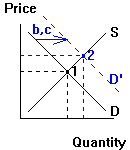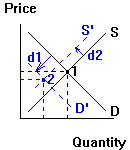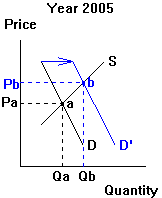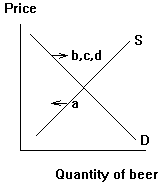| 3. | a. | See diagram to right.
Benefits of college = CDE (extra earnings) Costs of college = AB, where A=direct expenses B=foregone income Answer key checklist: The dollar values you plot for each year should equal the dollars for that year only. |
 |
| b. | D=college income benefits lost by leaving workforce for 15 years (note that F is lost whether you go to college or not. | ||
| c. | Since women are less likely to leave the labor force for long periods of time now, the net benefits of college have gone up, so they are more likely to pursue a college degree. | ||








